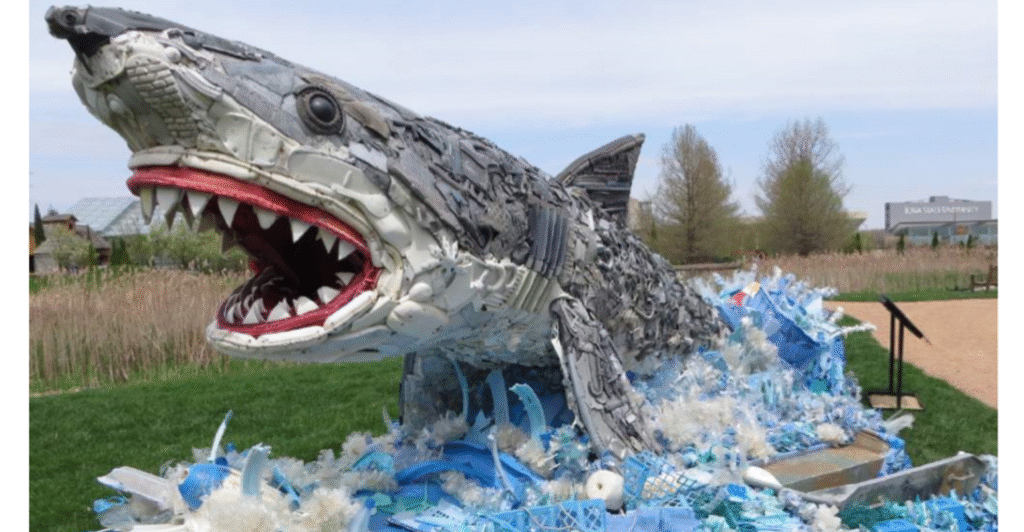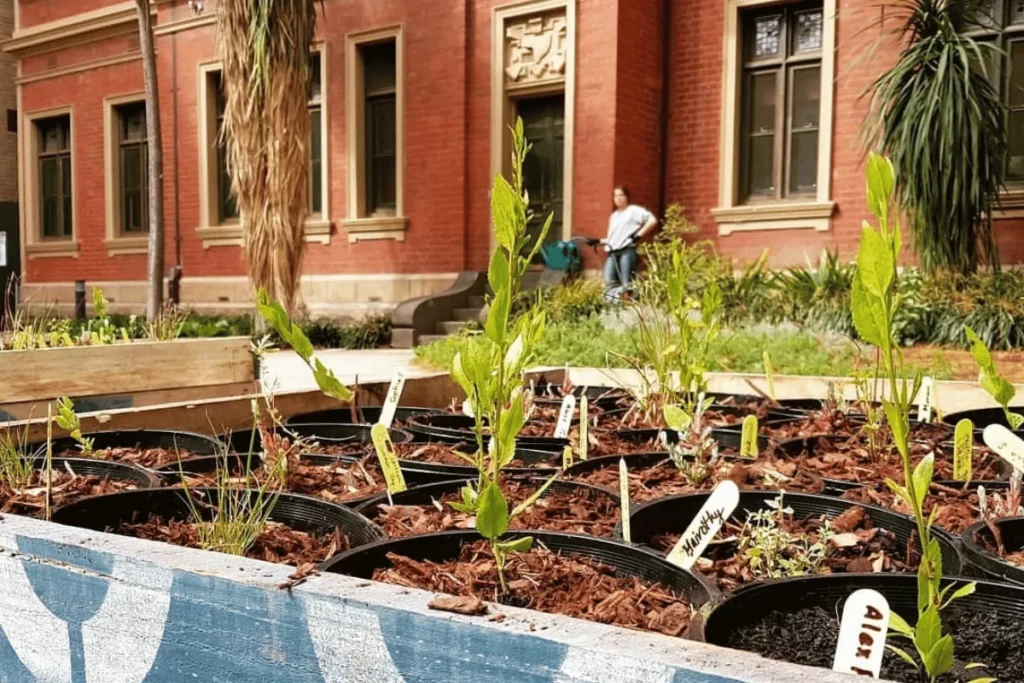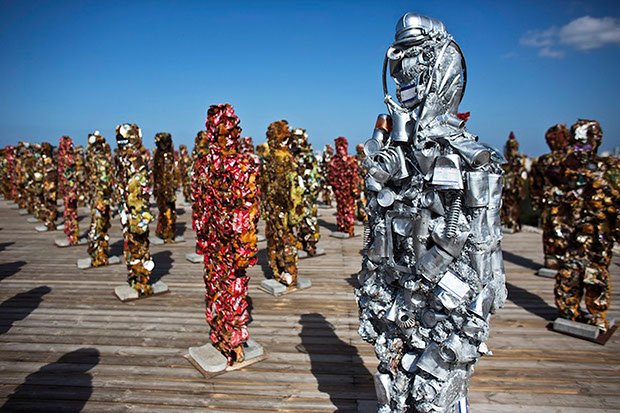In an age where environmental challenges are escalating, artists around the globe are embracing sustainability as a core value. Eco-art Projects, a powerful form of artistic expression that intertwines environmental consciousness with creativity, is gaining traction and reshaping the future of art.
From using recycled materials to constructing installations that clean the air or conserve water, these eco-art projects prove that art isn’t just about aesthetics—it’s about action.
Below, we dive into the Top 5 Eco-Art Projects that are not only visually stunning but also help protect our environment. Prepare to be inspired by a fusion of creativity, activism, and sustainability.
1. “Washed Ashore” – Turning Ocean Waste into Awareness
Location: Bandon, Oregon, USA
Artist/Organization: Angela Haseltine Pozzi
Angela Haseltine Pozzi’s Washed Ashore Project is a compelling example of how ocean plastic waste can be transformed into monumental sculptures of sea creatures. Created from marine debris collected from coastlines, these massive installations showcase whales, turtles, and fish, all made from discarded plastic bottles, flip-flops, and ropes.
Each sculpture is a vivid reminder of the dangers of ocean pollution. The project doesn’t just recycle waste—it educates communities, sparking conversations around plastic consumption and marine conservation.
Why it’s Sustainable:
- All materials are repurposed from waste.
- Promotes environmental education.
- Reduces landfill contributions through art.

2. “The Living Pavilion” – Nature and Indigenous Culture in Urban Space
Location: Melbourne, Australia
Collaborators: University of Melbourne, Indigenous Artists, and Scientists
A groundbreaking fusion of art, science, and Indigenous knowledge, The Living Pavilion was a temporary eco-installation that featured over 40,000 plants, interactive artworks, and community spaces. The goal? To reconnect people with native flora and celebrate Indigenous land practices.
The plants used in the pavilion were all native species and were donated to public parks after the event concluded. It also hosted cultural performances and community workshops, showcasing how art can foster ecological understanding and cultural healing.
Why it’s Sustainable:
- Temporary yet long-lasting impact.
- Promotes biodiversity and ecological literacy.
- Highlights Indigenous environmental stewardship.

3. “Trash People” – Sculptures from Global Waste
Location: Global (Displayed in Paris, Rome, Beijing & more)
Artist: HA Schult
HA Schult’s Trash People is one of the most iconic eco-art exhibitions in the world. Comprising over 1,000 life-sized figures made from crushed cans, computer parts, and industrial waste, this traveling exhibit has appeared near the Pyramids of Giza, the Great Wall of China, and Red Square.
Each sculpture reflects the global footprint of human consumption and acts as a mirror to modern society’s obsession with disposability. The installation is a striking example of how confronting waste through art can spark critical thinking.
Why it’s Sustainable:
- Uses exclusively upcycled and scrap materials.
- Globally exhibited, raising cross-cultural environmental awareness.
- Portable and reusable installation.

4. “Edible Estates” – Reclaiming Lawns for Food and Community
Location: United States, Europe, & South America
Artist: Fritz Haeg
Imagine replacing your front lawn with a productive edible garden. That’s exactly what artist Fritz Haeg envisioned with his Edible Estates project. By converting residential lawns into organic food gardens, this eco-art initiative is both a social experiment and a political statement.
Each garden is a collaborative artwork involving the homeowners and local communities. This reimagines suburban space, questioning norms and empowering people to participate in urban farming and sustainable living.
Why it’s Sustainable:
- Encourages local food production.
- Reduces carbon emissions from transported food.
- Fosters self-reliance and community participation.

5. “Solar Tree” – Functional Art that Powers Public Spaces
Location: Worldwide (India, China, Europe, USA)
Various Designers and Engineers
The Solar Tree is a futuristic blend of sculpture and renewable energy technology. These tree-like installations feature solar panels arranged as leaves, which collect sunlight during the day and power streetlights, USB charging ports, and digital kiosks.
These installations aren’t just technical marvels; they’re artistic centerpieces that reimagine how infrastructure can serve beauty, functionality, and the planet all at once.
Why it’s Sustainable:
- Promotes clean energy in urban environments.
- Often includes recycled or locally sourced construction materials.
- Interactive and educational.

Why Eco-Art Matters in Today’s World
Eco-art is more than a creative trend—it’s a catalyst for awareness, change, and dialogue. In a time where climate change, pollution, and resource depletion dominate headlines, these projects remind us that art can be both beautiful and responsible.
By engaging the senses and the conscience, eco-art bridges the gap between the scientific urgency of sustainability and the emotional resonance of artistic expression.
How Artists Are Reimagining Sustainability
- Materials: Recycled plastic, metal, paper, e-waste, organic matter
- Themes: Climate justice, habitat loss, urbanization, circular economy
- Goals: Educate, inspire action, reduce waste, promote eco-conscious living
From community engagement to global exhibitions, eco-artists are turning creativity into climate action—proving that art can literally save the world.
🔗 Explore More from DIY Artifacts
If you enjoyed this article, you’ll love these too:
